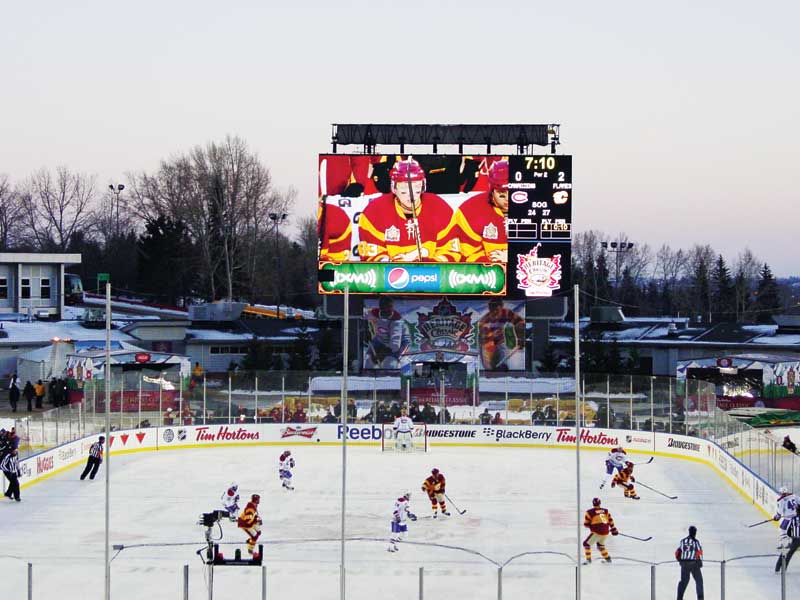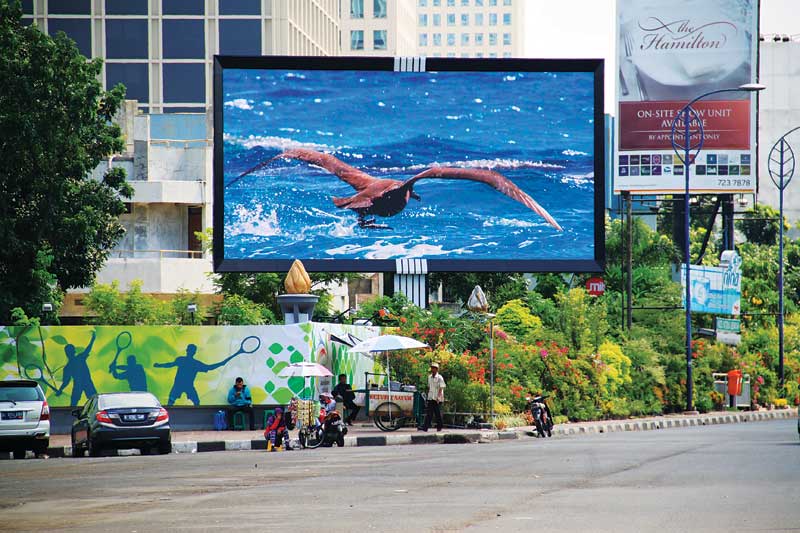
While LED billboards use the same technology as large-scale scoreboards, one of the reasons they appear so different is they are subject to bylaws.
There are two ways to measure light with regard to the regulation of signage brightness. Illuminance refers to the amount of light that strikes an object at a given distance. It is used by photographers, for example, to test how much light is reaching their subject at a certain location.
The unit of measurement for illuminance is so named because it represents the amount of light seen emitting from a candle 0.3 m (1 ft) away. This is an excellent metric for measuring light from an outdoor sign, as it reflects the perception of how bright the sign is with regard to its surroundings. Also, the larger the sign, the farther away the viewer stands to measure its brightness.
Ambient light plays a significant role in how sign brightness is perceived. Indeed, signs need to be set at different light levels depending on their surroundings to achieve the same perceived brightness as each other.
The second way to measure light is luminance, which refers to the amount or density of light emitted from an illuminated object, such as an EMC. Calculated in nits and measured with a spectrometer, luminance does not take into account the need for adjustments based on ambient light, nor does it measure appearance. As a result, it is difficult for jurisdictions to use luminance for any of their regulatory activities.
So, while the sign industry has used luminance as a way to express how bright its products are, illuminance standards are recommended instead for regulatory purposes, as they make it easier for officials to take measurements and enforce regulations in the field.

Brightness can be automatically adjusted in response to ambient lighting conditions.
With regard to automatic dimming, a sign might shine at 8,000 to 10,000 nits by day, for example, and then be reduced to only 300 nits at night, all while operating within the recommended standard for illuminance. It would also not be useful to schedule a sign to dim each evening at 6 p.m., since dusk and dawn come at different times throughout the year. Thus, it is better to use light-sensitive photo cells for automatic dimming, so the sign responds to ambient conditions as they change.
Hold times and transitions
‘Hold time’ refers to how long a message remains fixed in place before the sign transitions to another message. The shorter the hold time, the more beneficial the sign can be to its owner, as it can display a larger number of paid ads, in the case of a digital billboard, or convey more details about a business, in the case of an on-premise EMC.
In most jurisdictions today, hold times and transitions are regulated by local bylaws, which also restrict movement so as to prevent the display of full-motion video and animation. Instead, LED-based billboards are usually only allowed to show a series of static images, each for a certain amount of time.

Merit Construction’s sign in Edmonton is an example of how an LED board allows more details about a facility to be displayed.
A hold time of eight seconds is fairly standard for digital billboards. If a hold time of two to three seconds were allowed, then the same type of sign could instead showcase a greater number of simpler messages.
Regulations also cover message transitions in an effort to restrict the display of animated effects. In many cases, no transition effects are allowed, even though short ‘fade’ effects could help soften the shift from one message to the next.
In early 2015, the Transportation Association of Canada (TAC) released guidelines with added recommended restrictions for transitions and other movements on digital and projected advertising displays (DPADs). The guidelines are very conservative and have raised an uproar in the sign industry, as they could have an adverse effect on digital signage if they are applied by Canadian municipalities. While TAC admits no studies have demonstrated digital signs increase traffic accidents, for example, the report is nevertheless based on the premise that DPADs are designed to distract and should be required to emulate static signage.





